Machame Route, also known as the 'Whiskey Route' is the most popular routes on Mount Kilimanjaro.
This a steep and challenging route but the daily distances are fairly short and the good acclimatisation profile means a high success rate
According to statistics from Kilimanjaro National Park approximately 50% of trekkers use the Machame Route to ascend Kilimanjaro. The route is very scenic, providing hikers with incredible views and varying landscapes.
Here's my complete guide to the Machame route.
My Quick Takeaways:
Thinking about the Machame Route for your Mount Kilimanjaro climb? Here’s what you need to know at a glance:
- Most Popular Route: Known as the ‘Whiskey Route’, this is the most popular trail, chosen by around 50% of climbers.
- Stunning Scenery: One of the most scenic routes, passing through lush rainforests, moorlands, and alpine deserts before reaching the summit.
- Trek Duration: Typically completed in 6 or 7 days, with the 7-day itinerary offering better acclimatisation and higher success rates.
- Moderate to Difficult: Includes some steep sections, particularly Day 2 and the Barranco Wall on Day 4, but no technical climbing is required.
- Great for Acclimatisation: The ‘climb high, sleep low’ approach makes it one of the better routes for altitude adaptation, improving summit chances.
If you're looking for a challenging yet rewarding climb with breathtaking landscapes, the Machame Route is a fantastic choice! Now, let's dive into the details of this epic Kilimanjaro route.
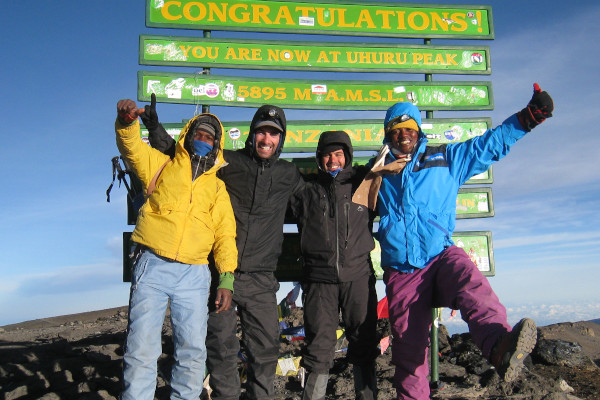
Plan your Kilimanjaro trek
Get a quote from my recommended local Kilimanjaro operator
How Difficult Is Kilimanjaro Machame Route?
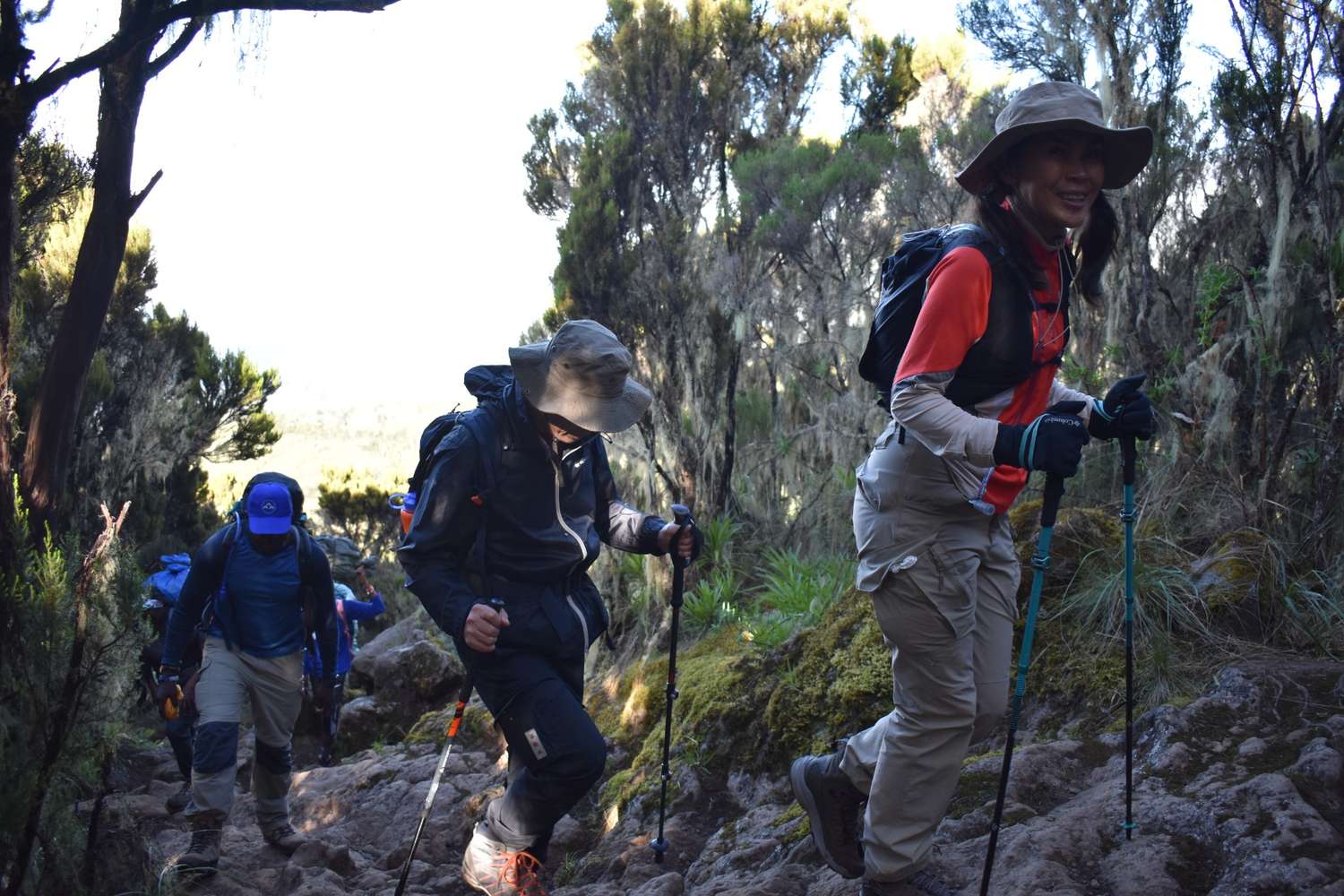
Although the distances between camps is not very long on the Machame route, some parts of the hike are quite steep.
The Machame route is relatively difficult in terms of multi-day treks.
Day two is a notoriously steep trek (but luckily short) and climbers need to ascend the Barranco Wall on day four. You also have to contend with a steep incline up Kibo on summit night.
That being said, there are no parts on the route that require any technical climbing skills. I often recommend the 7-Day version of this route as the best choice for first time Kili trekkers. More on why the 7-Day option is the best choice later in the article.
The total Machame route distance is approximately 62 kilometers from gate to gate.
Machame Route Map
One can complete the Machame route on a 6 or 7 day itinerary. Both options include a climb high, sleep low acclimatisation day.
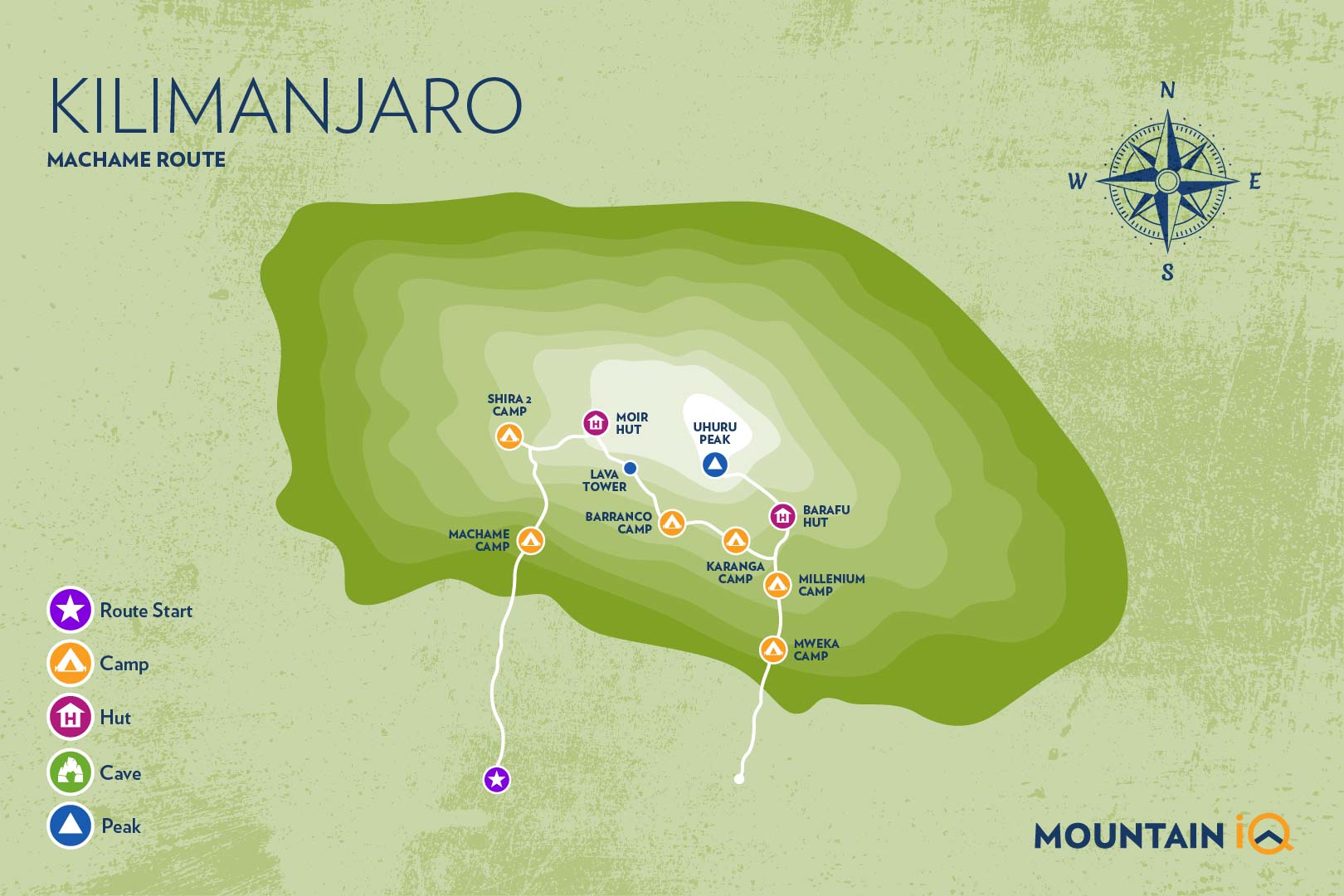
Machame Route Itinerary
Below is the typical itinerary for an 7-day Machame Route.
Day 1 – Machame Gate (1,640 meters) to Machame Camp (2,835 meters)
Distance: ~11km / 7 miles
Trekking time: 5-7 hours
Zone: Rainforest
The first day trekking begins at Machame Gate (1,640 meters). Typically you will drive from the town of Moshi or Arusha to the gate, which takes approximately an hour for the former and two hours for the latter.
On the way you will get to see subsistence farming and the town of Machame.
At the Gate you will meet your trekking crew – your guide, porters and cook. There will be a flurry of activity as porters assemble gear for the trek; weighing packs to ensure they don’t exceed 15 kilograms.
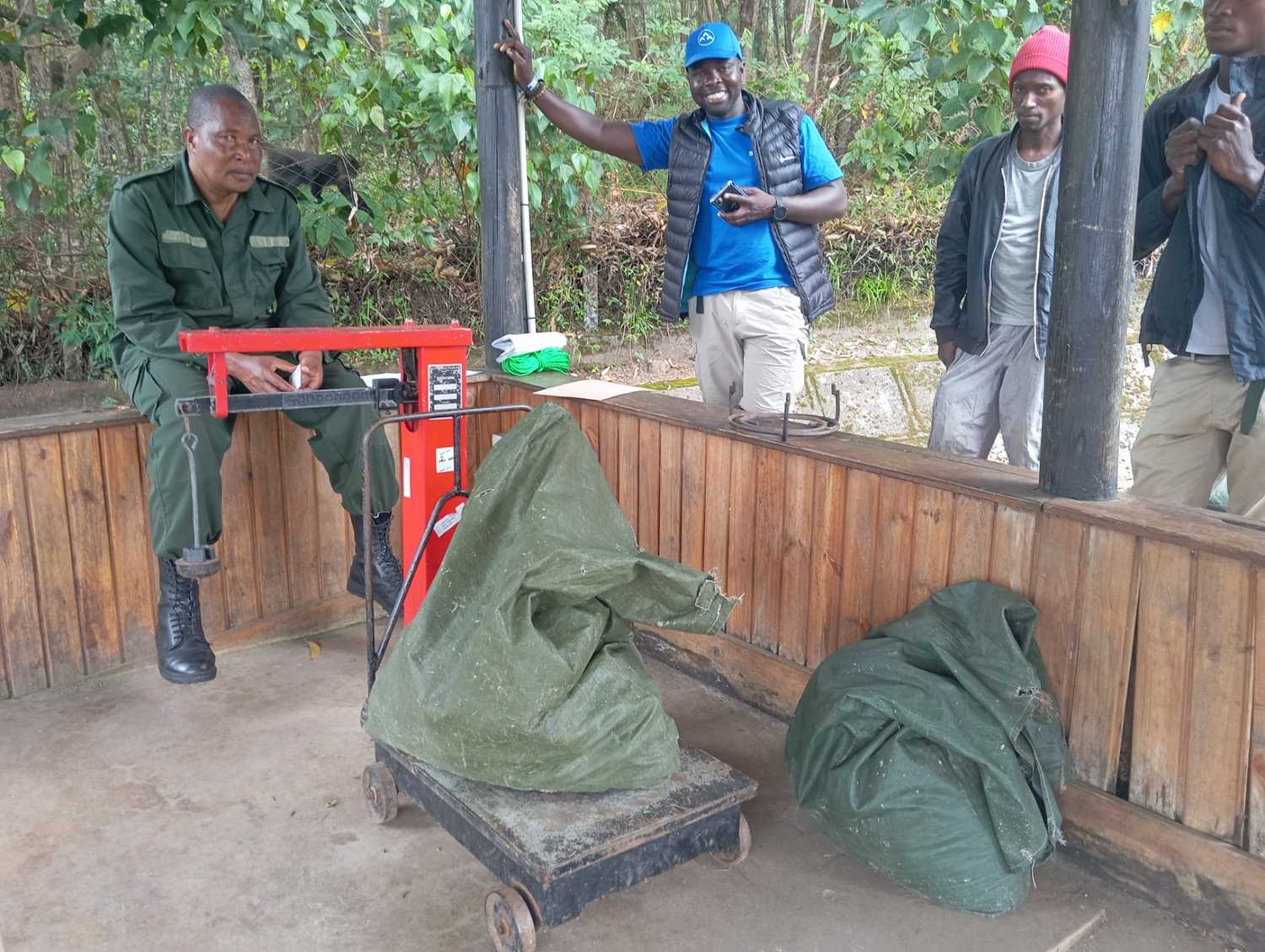
Packs are weighed at the gate to ensure they don't exceed the limit, generally this is 15kg per guest.
You, your guide and climbing team will in the meantime begin the ascent through the stunning rainforest that covers the South-West of the mountain.
The first day trek on the Machame Route is a long one (~11km / 7miles) and takes approximately 5-7 hours to complete.
Most tour operators will provide a packed lunch on route and 2-3 litres of bottled water. This is the only bottled water you will receive.
Other operators simplyprovide som boiled or filtered water to fill up at the start.
From here on porters will collect water from mountain streams. The day’s trekking ends at Machame Camp (2,835 meters) which sits near the border of the rainforest zone and the low alpine zone.
By the time you arrive your porters will have already setup your camp and tents, and dinner will be served.
Day 2 – Machame Camp (2,835 meters) to Shira Camp 2 (3,850 meters)
Distance: ~5km / 3 miles
Trekking time: 4-6 hours
Zone: Low-alpine zone
On day two you will rise early, pack your gear and prepare for the trek from Machame Camp to Shira Camp 2 (3,850 meters).
The trek is relatively steep as you enter the low alpine zone which is characterised by moorlands and grasslands.
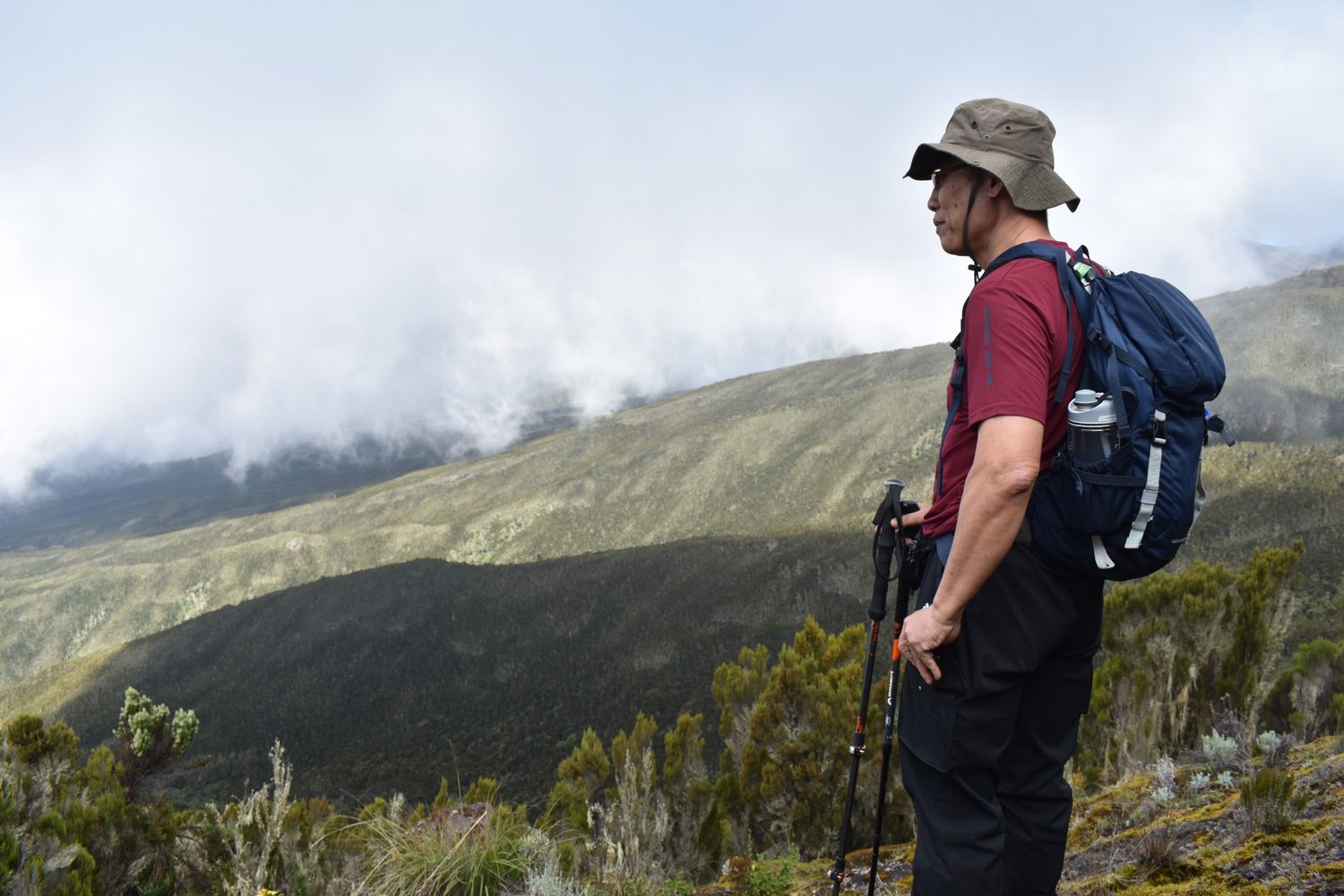
Between Machame and Shira Cave camp is a steep hike but there are some stunning viewpoints to catch your breath.
Shira Camp 2 sits on a plateau which provides you with the first views of Kibo in the North-West and Mount Meru in the East. Day two takes approximately 4-6 hours and covers a distance of 5km / 3miles.
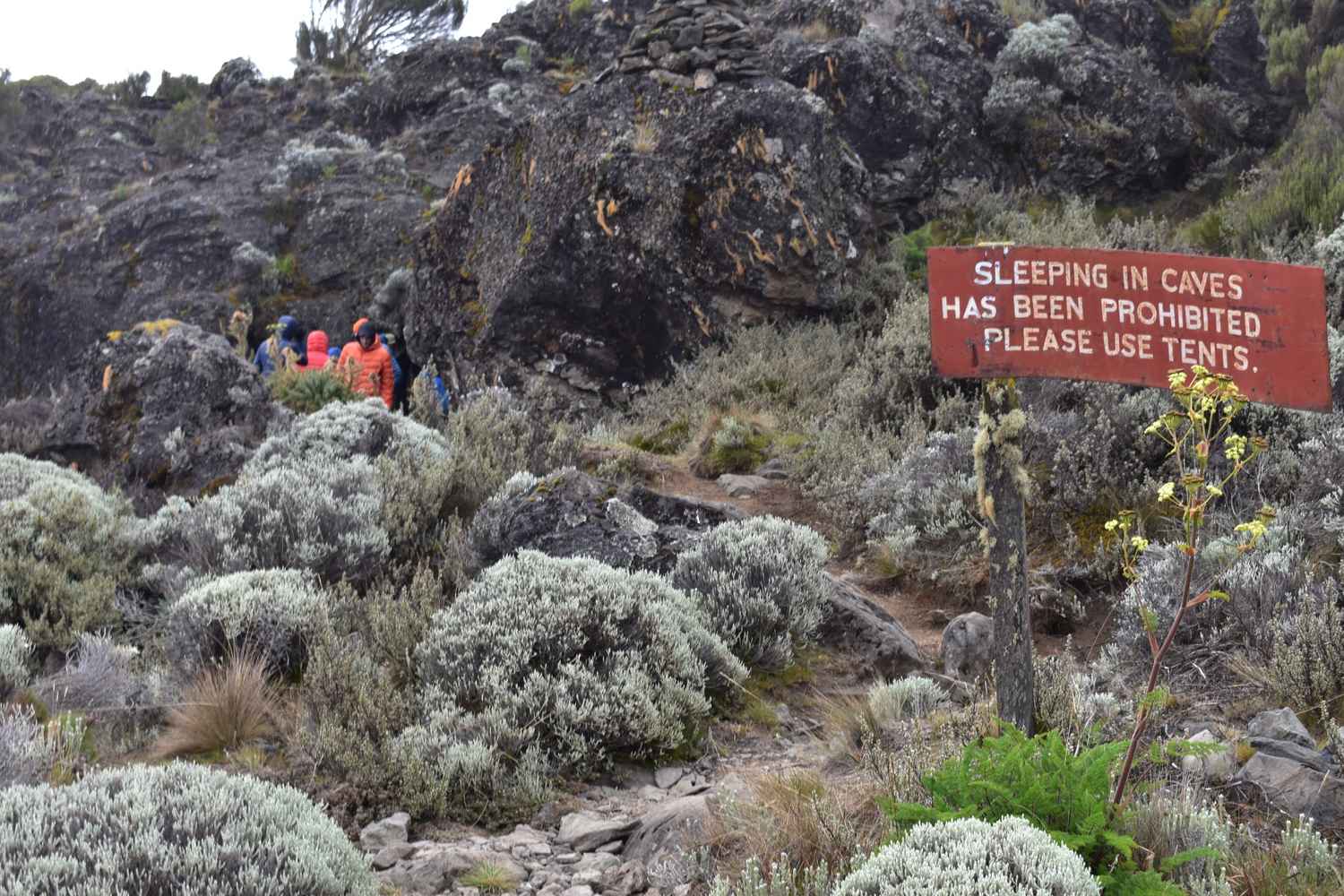
Shira Cave Camp gets its name from the cave. In the early days, hikers would sleep in the cave instead of tents.
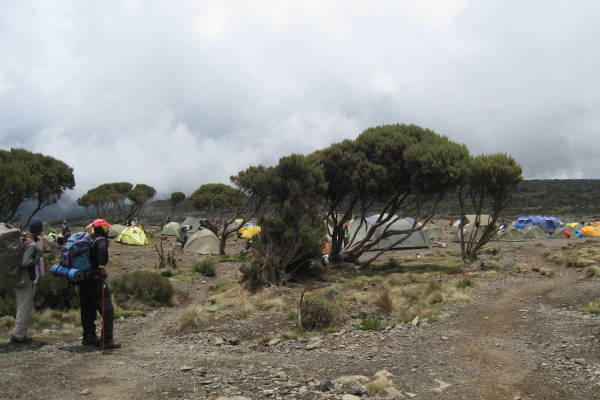
Day 3 – Shira Camp 2 (3,850 meters) to Lava Tower (4,600 meters) and then Barranco Camp (3,900 meters)
Distance: 11km / 7 miles
Trekking time: 5-7 hours
Zone: Low-alpine zone / High-alpine zone
Day three is a long and tough trek East off the Shira Plateau up to Lava Tower and the Shark’s Tooth rock formation at 4,600 meters and then back down via the Southern Circuit (see map above) through the ‘Garden of the Senecios’, to Barranco Camp (3,900 meters).
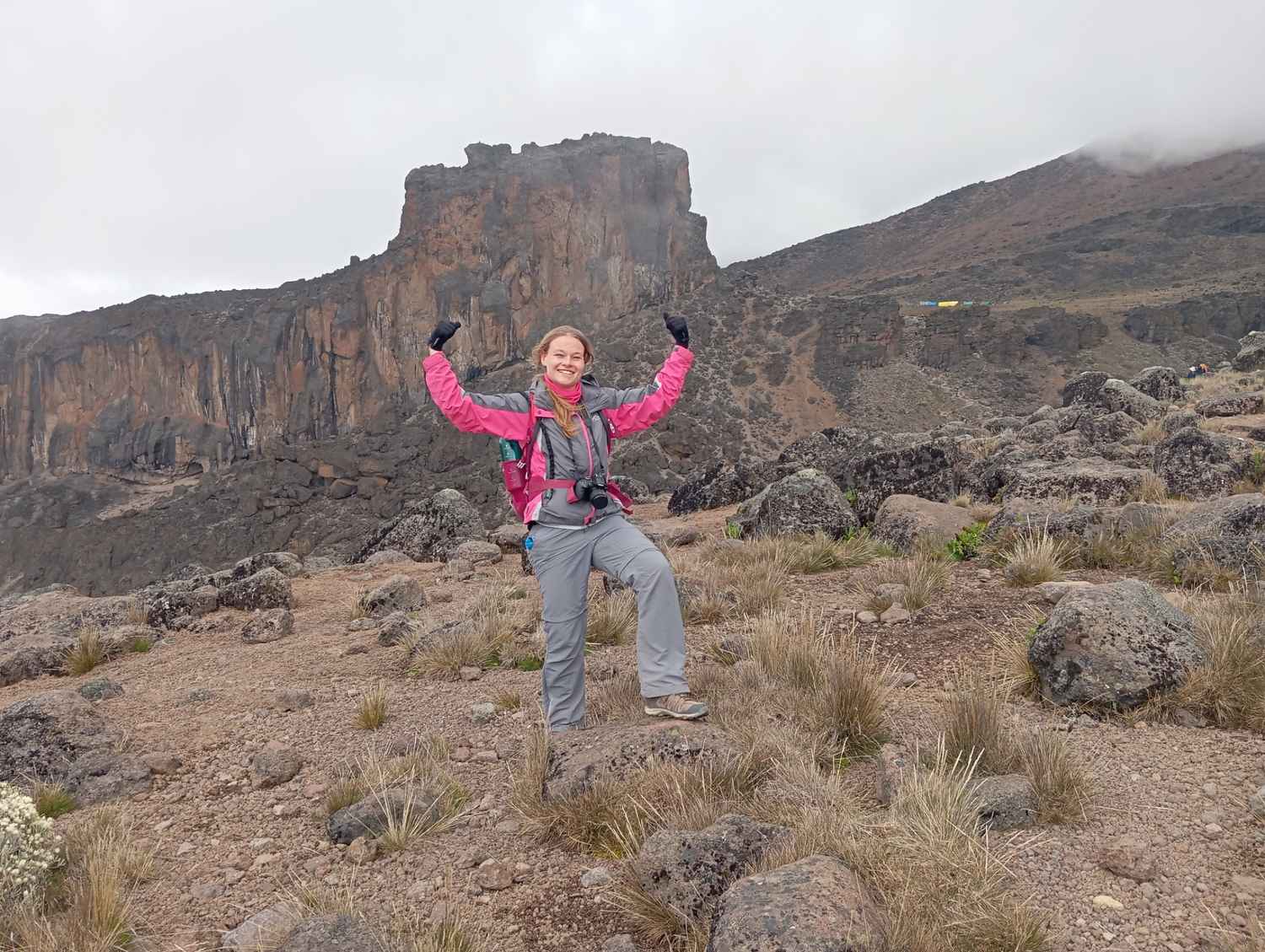
Lava Tower is an iconic formation where the Lemosho and Machame routes meet up. Most groups stop to have lunch at this high altitude before descending to Barranco Camp.
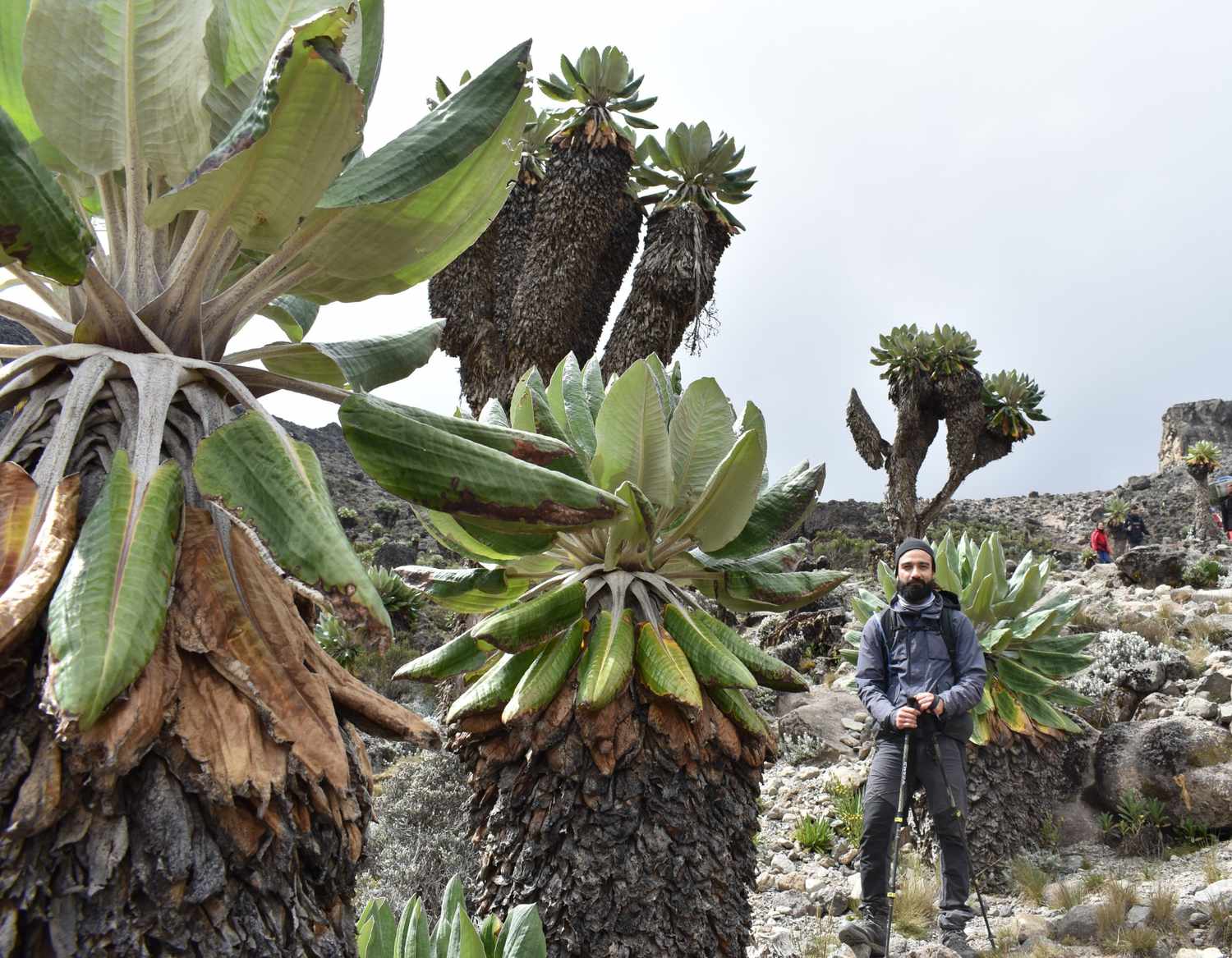
The giant Senecio plants on the way down to Barranco Camp stand out like aliens against the barren landscape.
The route is approximately 11km / 7 miles in length and takes 5-7 hours to complete.
Although you end the day at a very similar elevation to when you started from Shira Camp, it is arguably one of the most important days on your trek as it gives you a chance to climb high and sleep low which is important for proper acclimatisation.

Plan your Kilimanjaro trek
Get a quote from my recommended local Kilimanjaro operator
Day 4 – Barranco Camp (3,900 meters) to Karanga Camp (3,960 meters)
Distance: 12 km / 7.5 miles
Trekking time: 6-7 hours
Zone: High-alpine zone
Day four on the Machame Route begins with a steep traverse up the Barranco Wall; a 257 meter rock face that requires basic scrambling skills to the top of the Karanga Valley.
The path then follows a series of inclines and declines to Karanga Camp (3,960 meters).
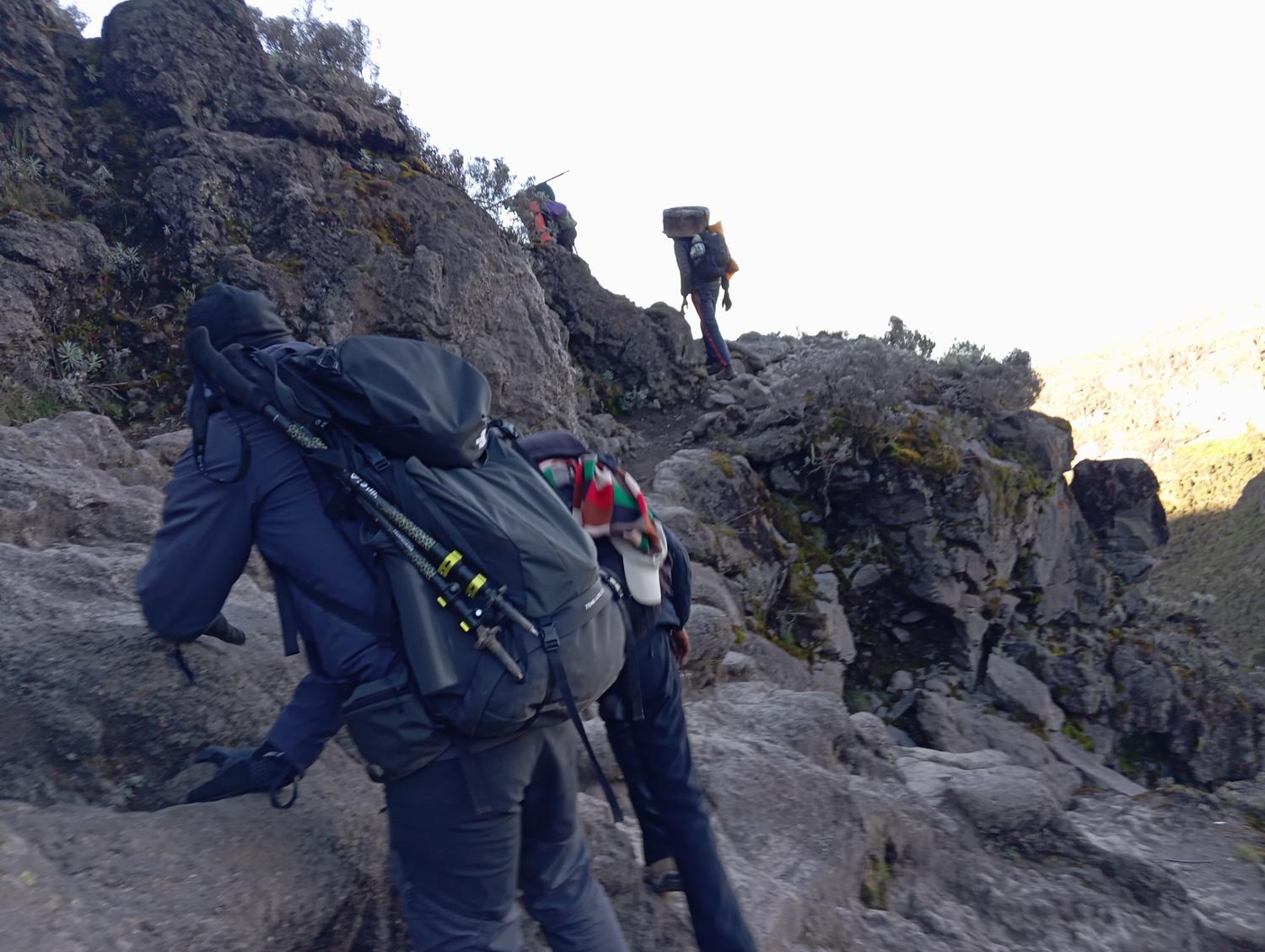
Best to put away your trekking poles while climbing Barranco Wall, it's better to have your hands free to scramble on the rocks.
Trekkers on the seven day route spend the night at Karanga Camp before continuing on to Barafu on day 5. This additional day is beneficial in terms of acclimatisation.
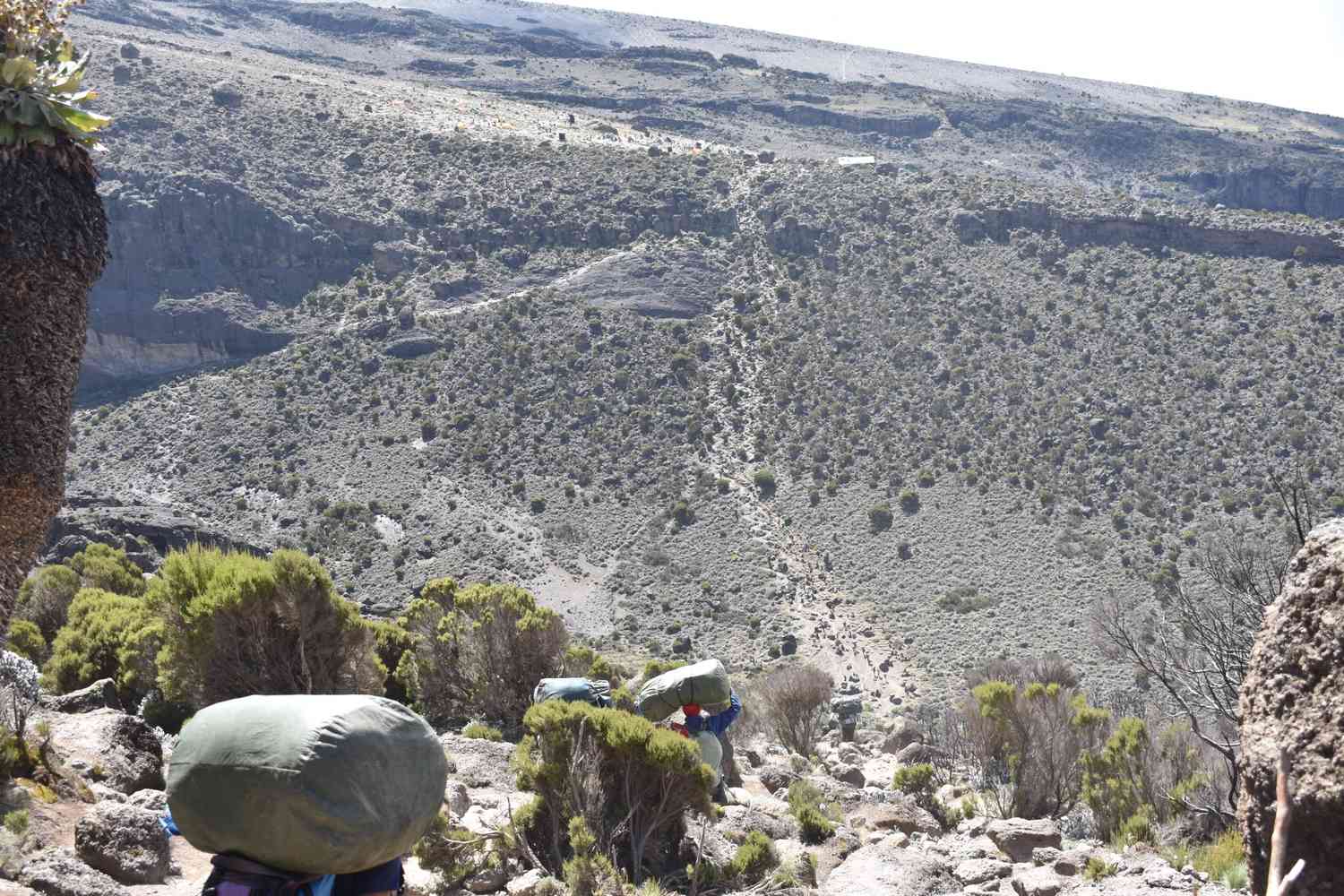
Just when you think Karanga Camp is within reach... A final steep sided valley before you reach camp.
If you are on a six day trek you will stop for lunch at Karanga Camp and then continue on along the Southern Circuit until it joins the Mweka Trail up to Barafu Camp (4,680 meters).
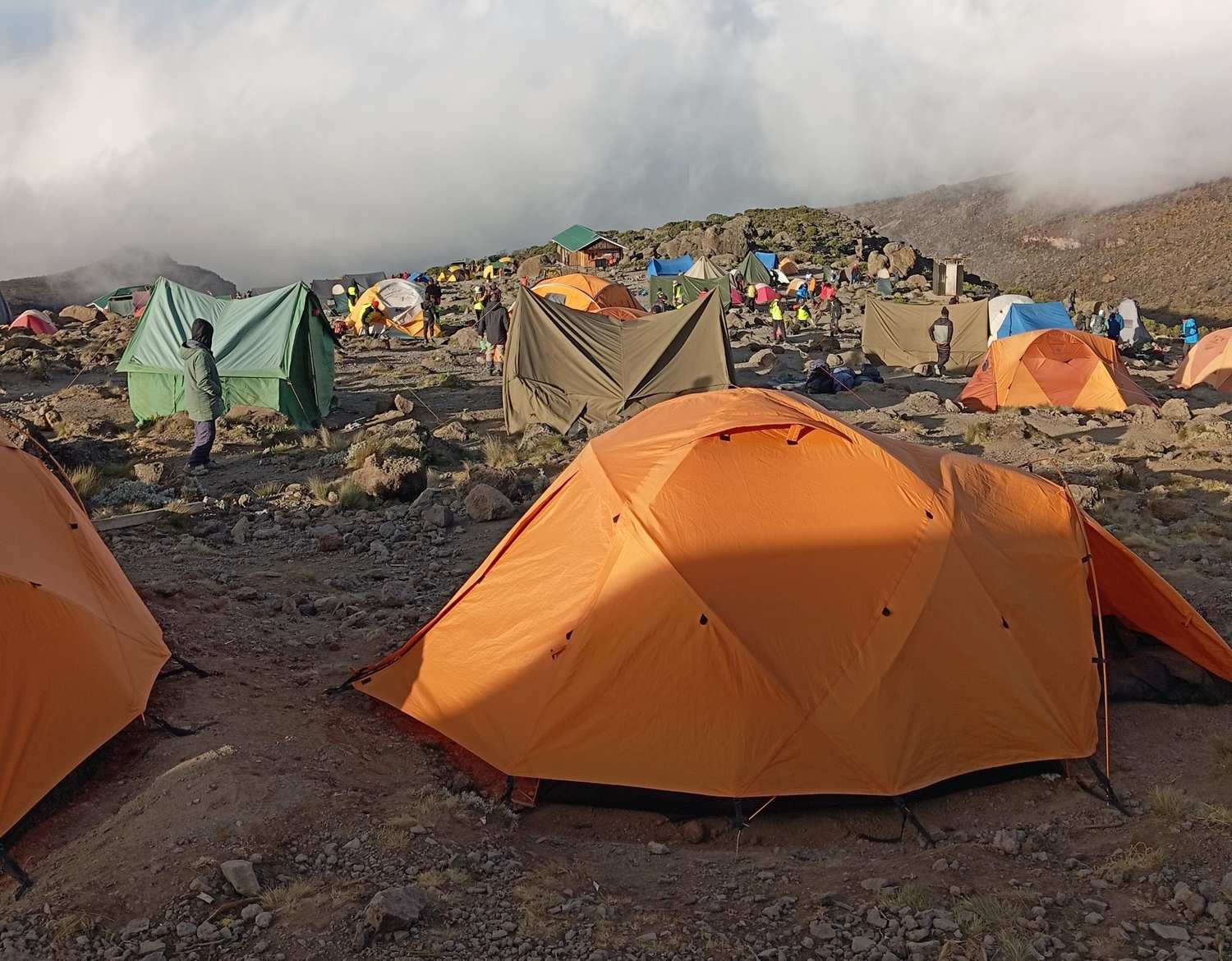
Karanga Camp sits at 3995m above sea level. The extra night at this altitude is important for acclimatization.
For six day trekkers, day 4 takes approximately 8-10 hours to complete and covers 9.5km / 6 miles.
When you arrive at Barafu around mid-afternoon you will be served an early dinner and encouraged to get some shut-eye as the summit trek commences around 24:00 that night.
Day 5 – Karanga Camp (3,960 meters) to Barafu Camp (4,680m)
Distance: 6 km / 4 miles
Trekking time: 3 hours
Zone: High-alpine zone
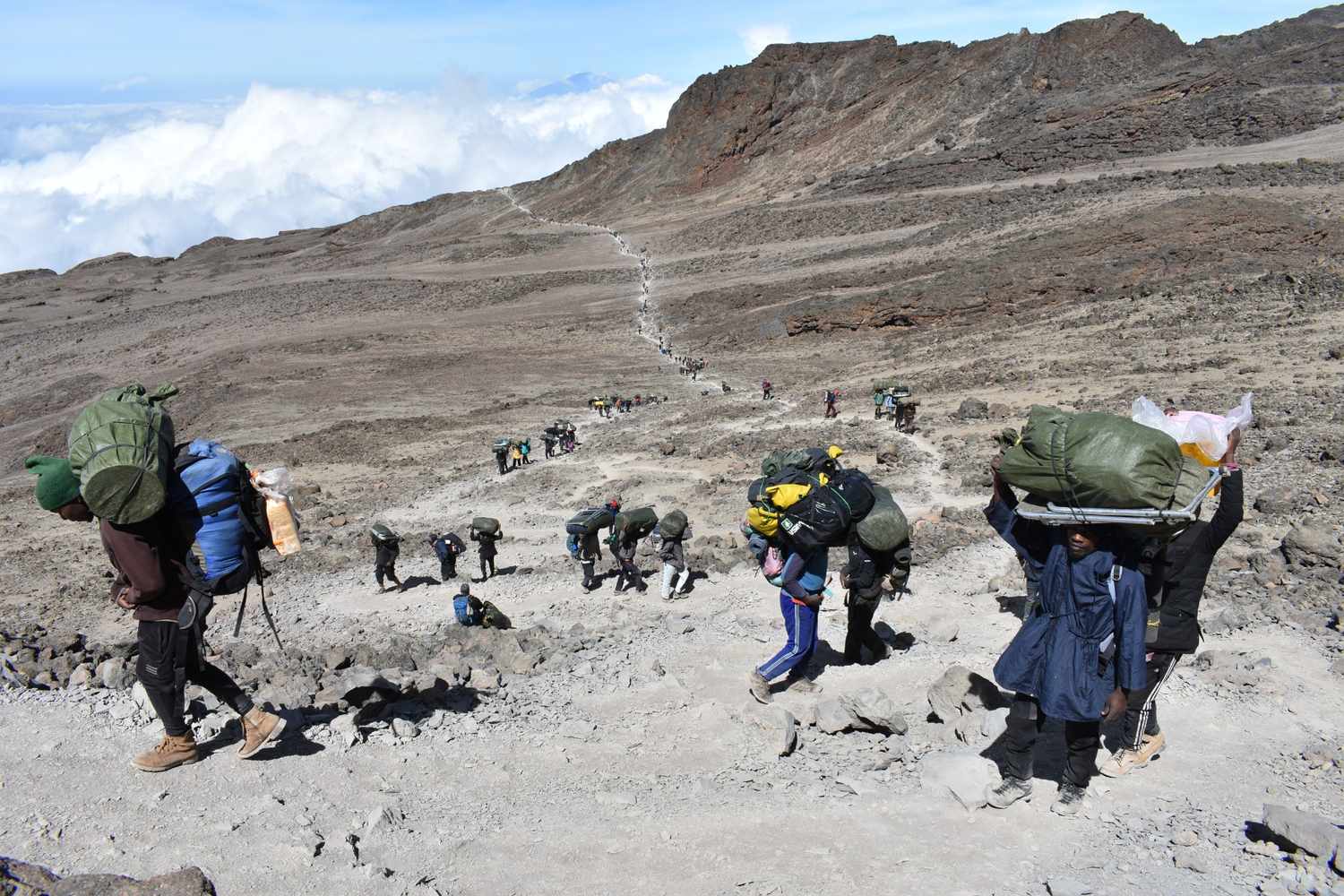
The few km's between Karanga and Barafu are not very scenic. Aso be prepared to get blasted by cold, high altitude winds.
Day five is a short and easy day. The trail starts at Karanga Camp and joins the Mweka trail up to base camp, Barafu at 4,680m.
My Pro Tip: I recommend you use the easy hiking to relax and prepare for the summit push.

Plan your Kilimanjaro trek
Get a quote from my recommended local Kilimanjaro operator
Day 6 – Barafu Camp (4,680 meters) to Uhuru Peak (5,895 meters) and then Mweka Camp (3,100 meters)
Distance: ~4.5km / 3 miles ascent and then 11km / 7 mile descent
Trekking time: 6-8 hours to the summit and then 5-8 hours to Mweka
Zone: Glacial zone and the all preceding zones
Day six is summit night (and day)! You will be awoken around 23:30 with hot tea and biscuits.
Hopefully you have managed to get a few hours’ sleep; don’t worry if you haven’t as most people struggle to sleep before summit night.
Do however make sure that all your kit, including warm clothes, headlamp, insulated water reserves and snacks are ready for a sharp departure at 24:00.
The trek up Kibo is steep and slow. The trick is to keep your momentum moving forward, one step at a time.
It takes about 6-8 hours to reach the top of the crater rim where you will see the sign for Stella Point (5,739 meters).
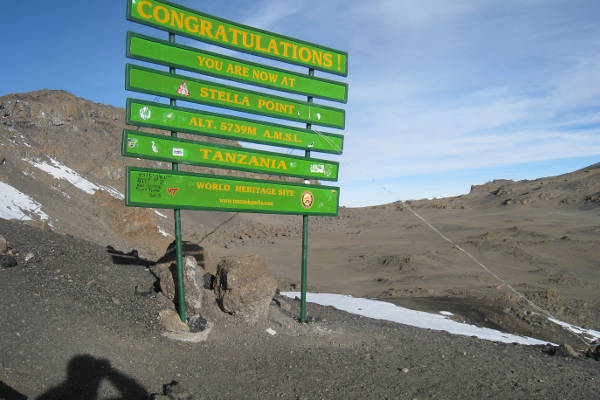
Stella Point
This is not the summit of Kilimanjaro.
You still have another 156 meters of altitude to walk around the crater rim to Uhuru Peak (5,895 meters).
My Pro Tip: I recommend resting briefly at Stella Point and potentially having some hot tea or hot chocolate.
Dawn should be approaching. Take a moment to savour where you have got to and then dig deep for the energy to push for the summit.
Over 60% of climbers stop at Stella Point but most can make it to the summit if they muster the metal strength to push through. Obviously if you are experiencing severe AMS symptoms you should descend immediately.
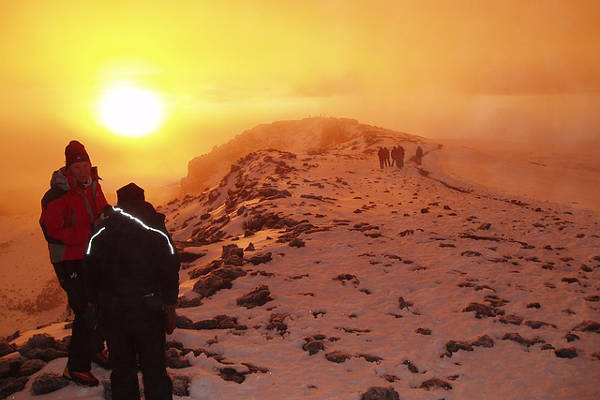
Sunrise, with the summit in the distance. Not far to go now!
After reaching the summit of Kilimanjaro, a 4.5km / 3 mile ascent, you still have an 11km / 7 mile descent to Mweka Camp (3,100 meters)!
The descent can be very gruelling on your joints. It is recommend you use trekking poles and potentially wear gaiters to avoid fine glacial scree getting into your boots. Mweka is situated in the upper part of the rainforest zone.
The richness of oxygen and moisture in the air will be a very welcome surprise.

Plan your Kilimanjaro trek
Get a quote from my recommended local Kilimanjaro operator
Day 7 – Mweka Camp (3,100 meters) to Mweka Gate (1,640 meters)
Distance: ~9km / 5.5 miles
Trekking time: 3-5 hours
Zone: Rainforest
Day seven is the final day of trekking on the Machame Route.
By now you will be exhausted and probably only thinking about a hot shower. The trek is a pleasant one through the lower rain-forested slopes and down to Mweka Gate (1,640 meters).
Although you cover 9km / 5.5 miles, the trek only takes 3-4 hours.
Assuming you successfully reach Stella Point or Uhuru Peak you will be presented with official certificates – a green certificate for the former and a gold certificate for the latter.
It is customary to tip your trekking crew before being transported back to your hotel in Moshi or Arusha.

Plan your Kilimanjaro trek
Get a quote from my recommended local Kilimanjaro operator
6 Or 7 Day Machame Route?
If you are considering hiking the Machame Route up Kili, you will see that operators generally offer a 6 or 7 day option.
On a typical 6-Day Mahame hike, you will skip Karanga Camp (Day 4) and hike directly from Barranco camp to Barafu Camp.
This is about 8.5km/ 5.3 miles in total, so not too long in terms of distance. However, the risk with skipping Karanga is that trekkers miss out on an extra night at a high altitude camp.
This extra night can make a big difference in acclimatisation and even determine whether or not you reach the summit.
Statistically, 7 Day Machame trekkers are 10-15% more likely to summit than those on the 6 day trek.
I always recommend you choose the 7-Day Machame Route. It's better to take the longer option and give your body an extra day to adjust.
Kilimanjaro Machame Route Altitude Profile
Here's what the Kilimanjaro Machame route altitude profile looks like.
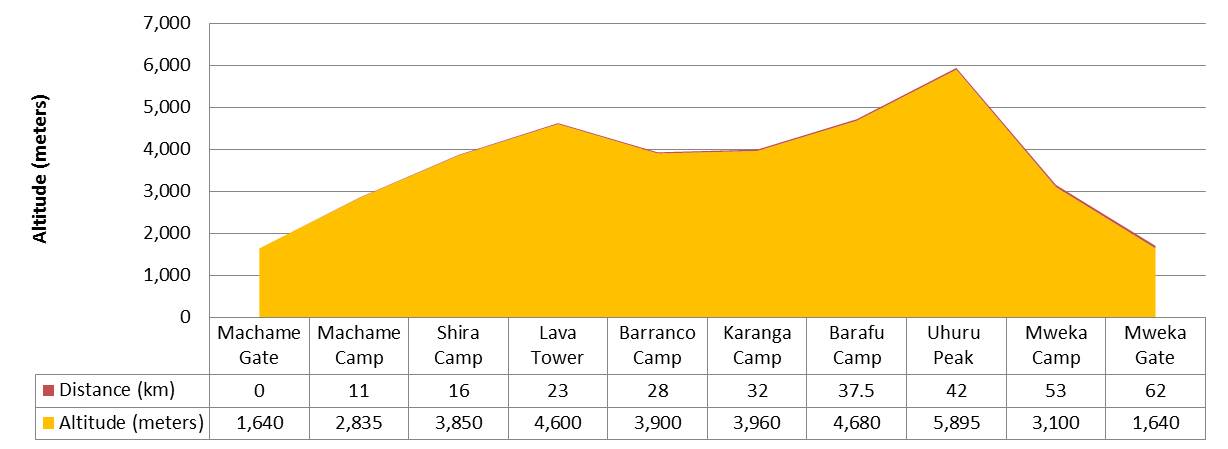
My Final Thoughts
And there you have it: You're now an expert on the Machame Route, Kilimanjaro. But your adventure doesn't stop here. Check out my other Kilimanjaro routes and helpful guides:

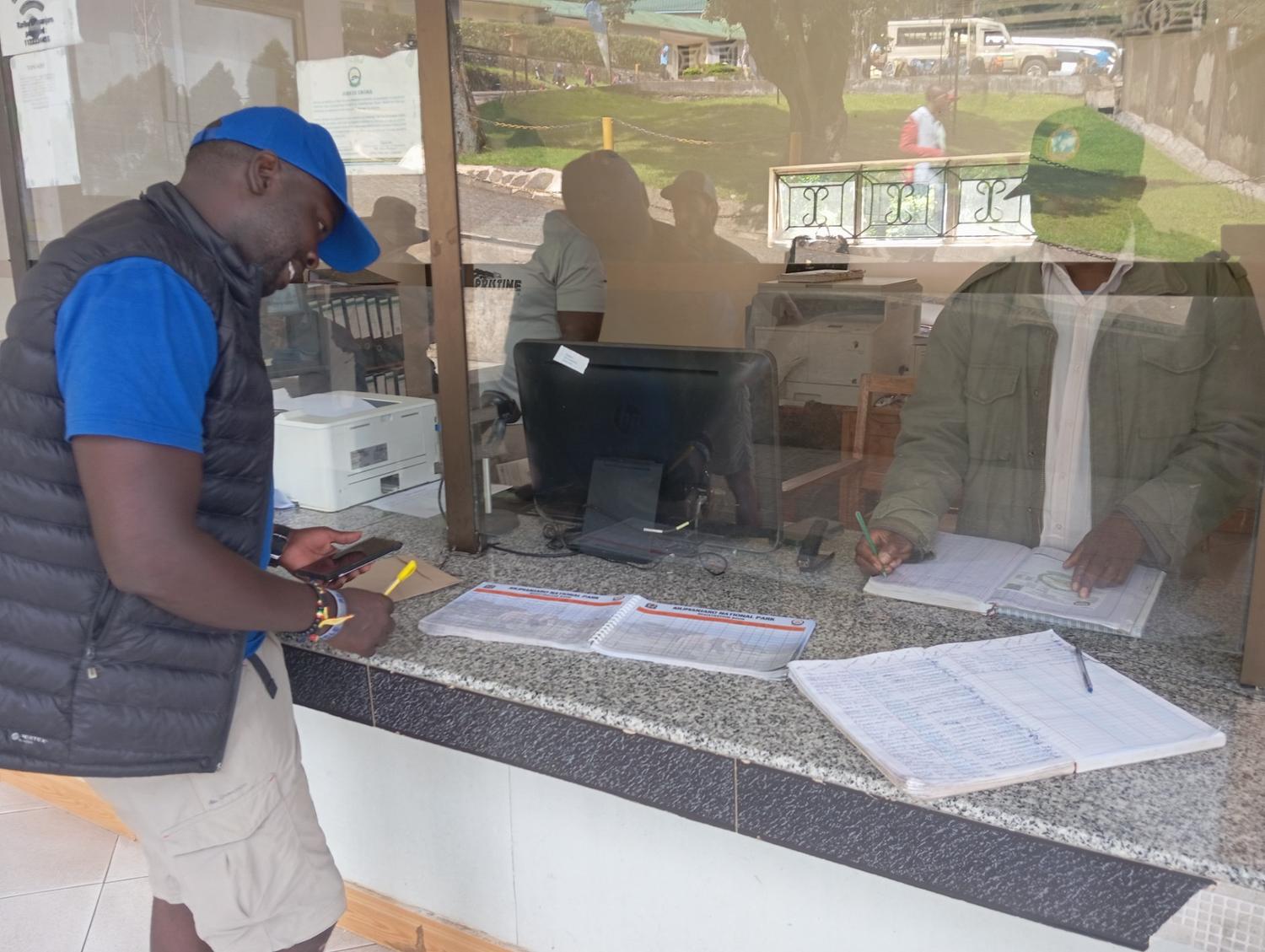
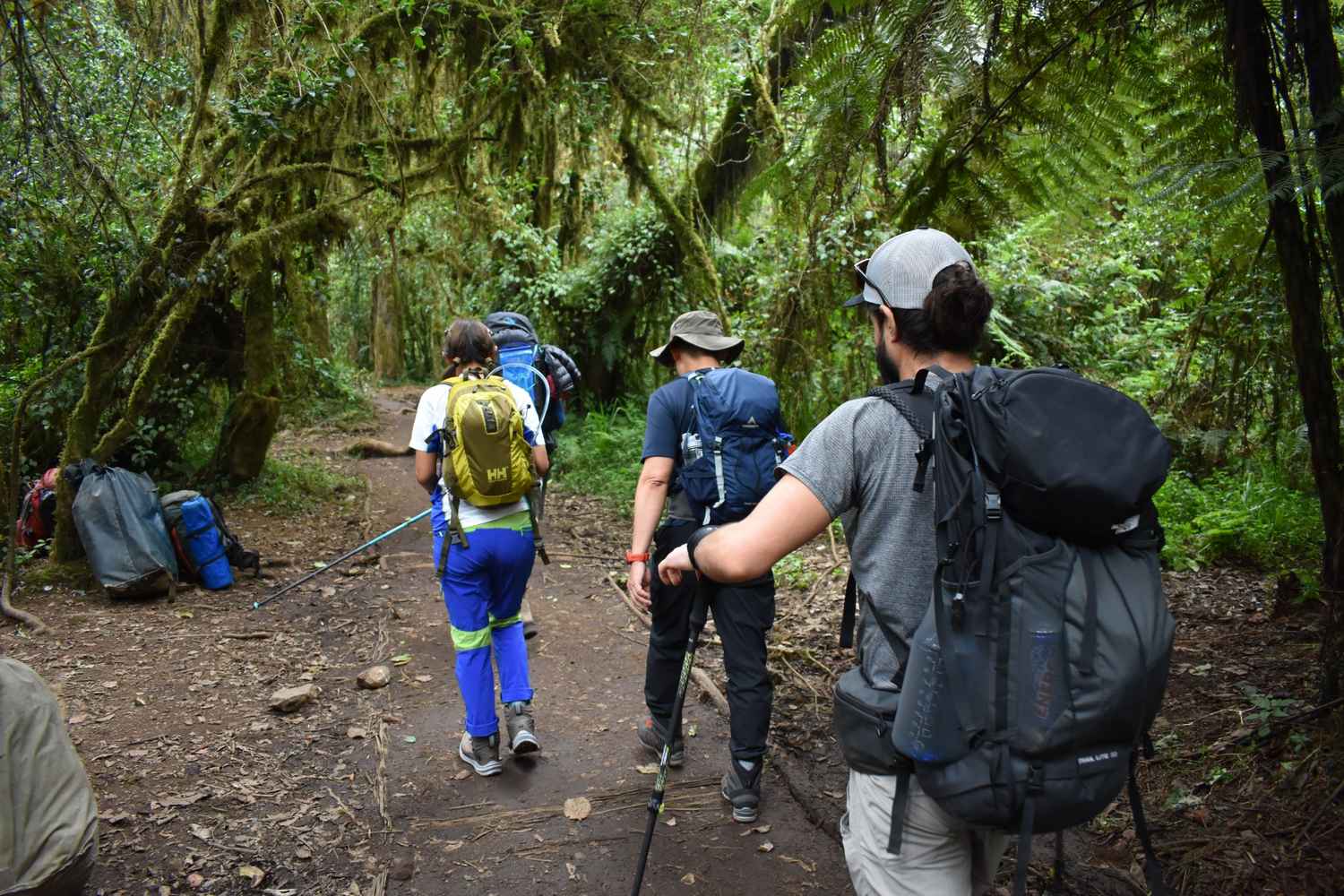
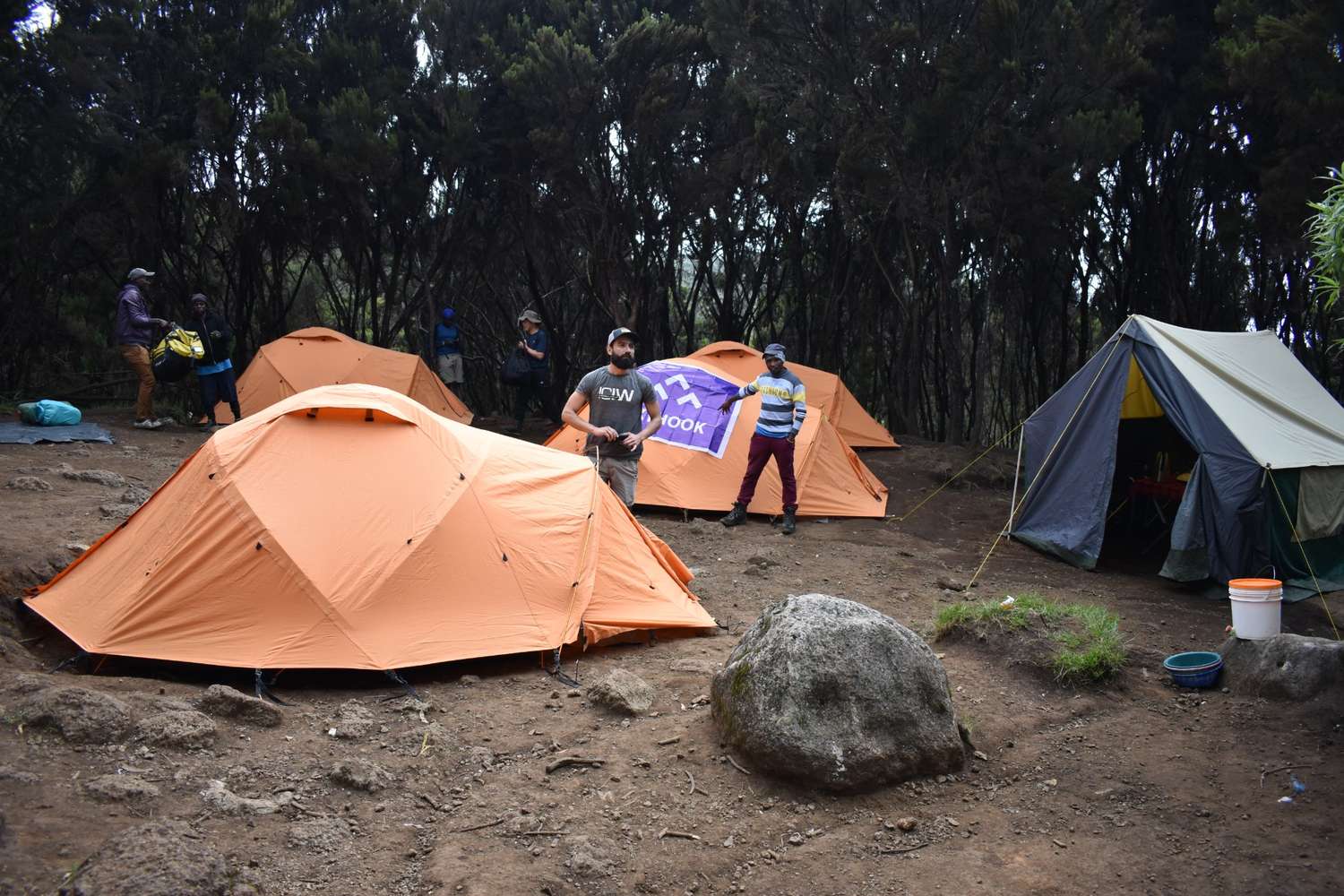
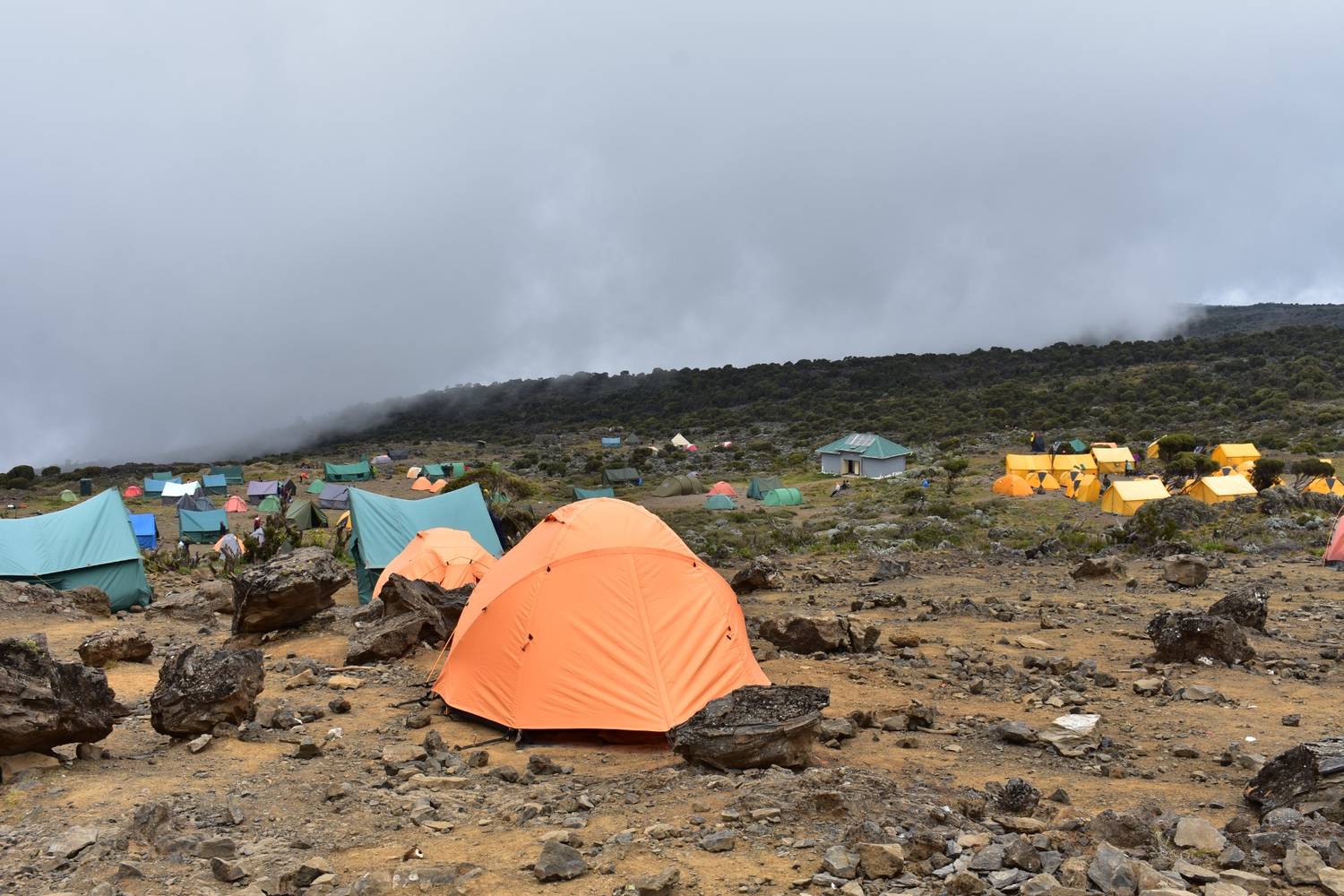
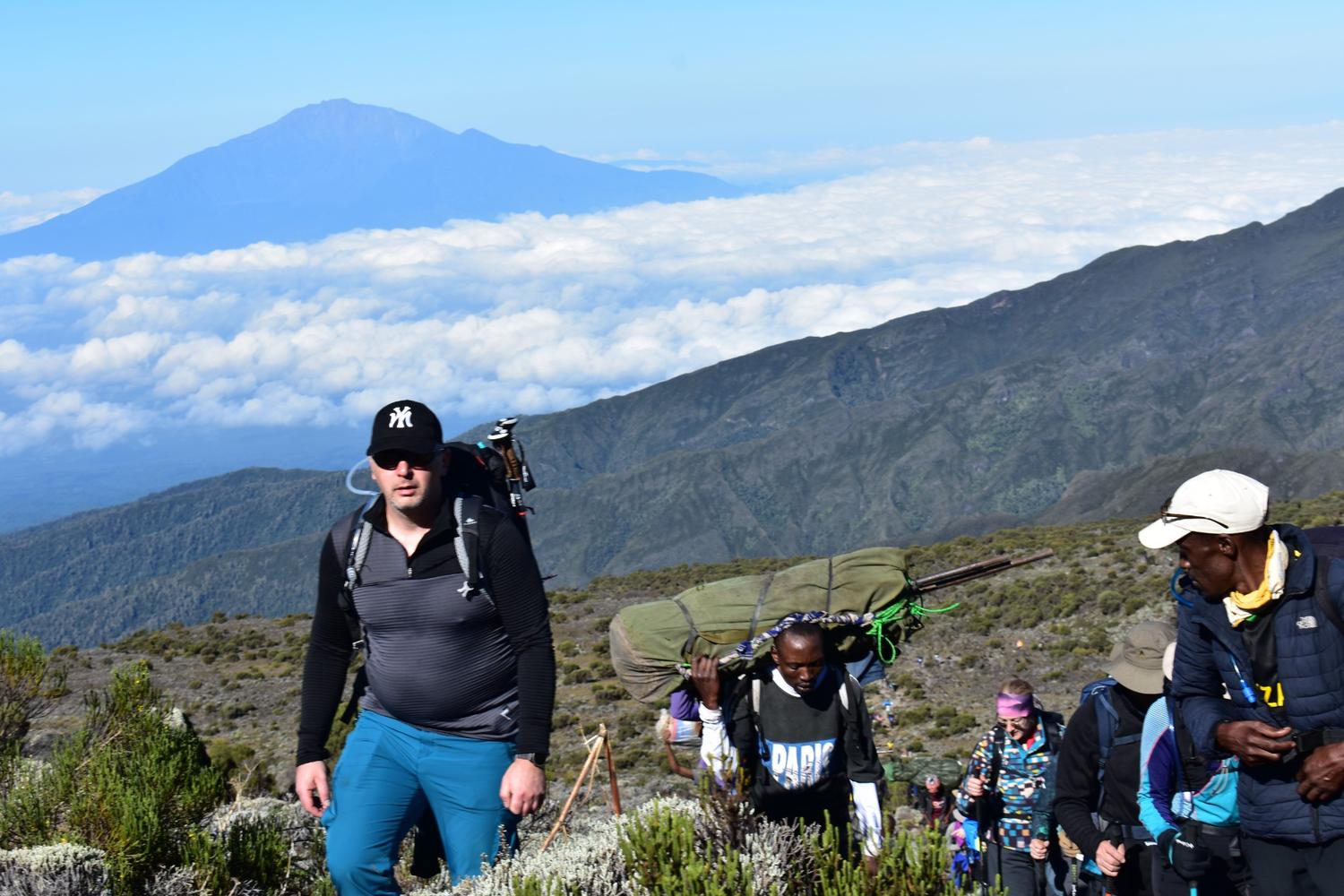
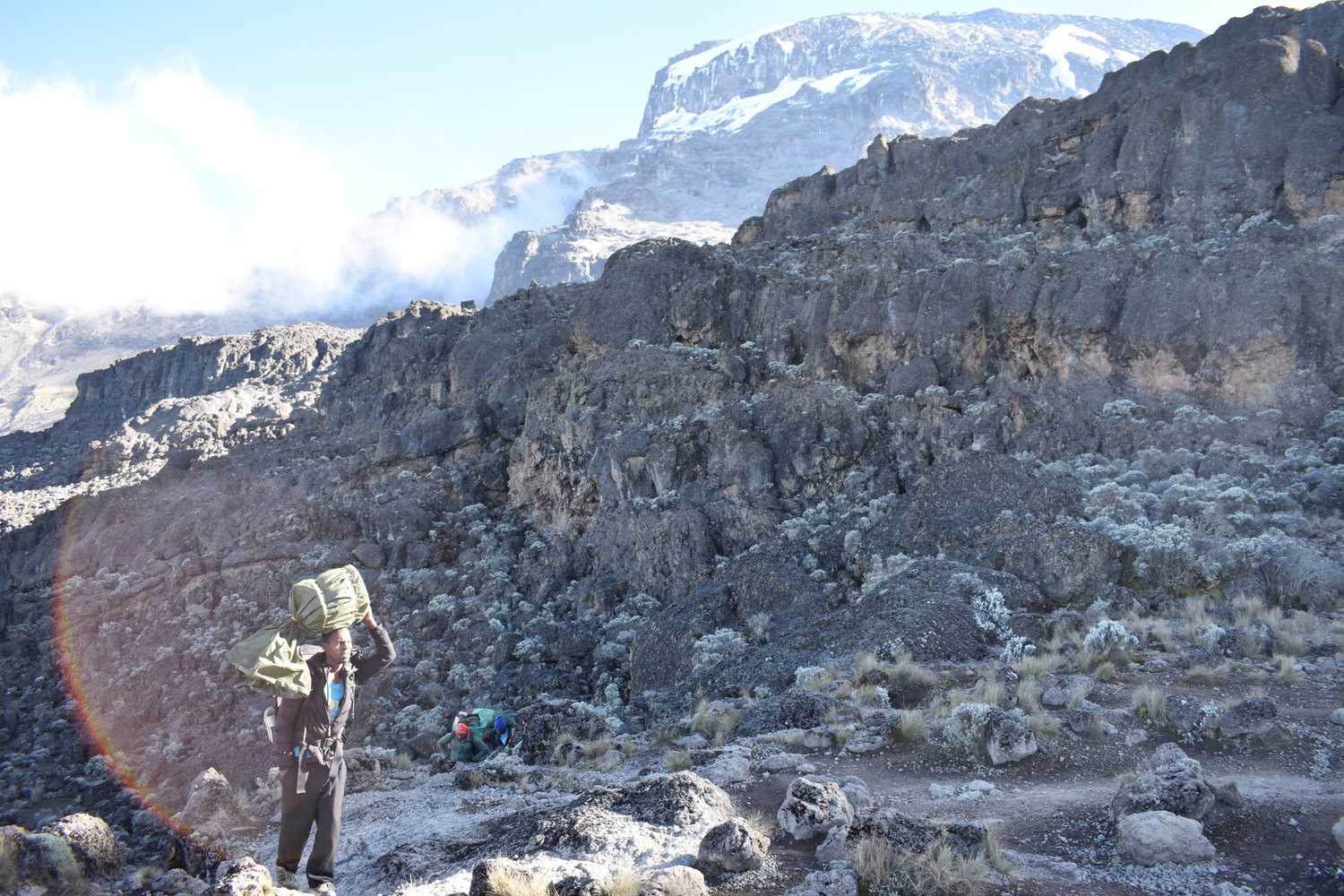
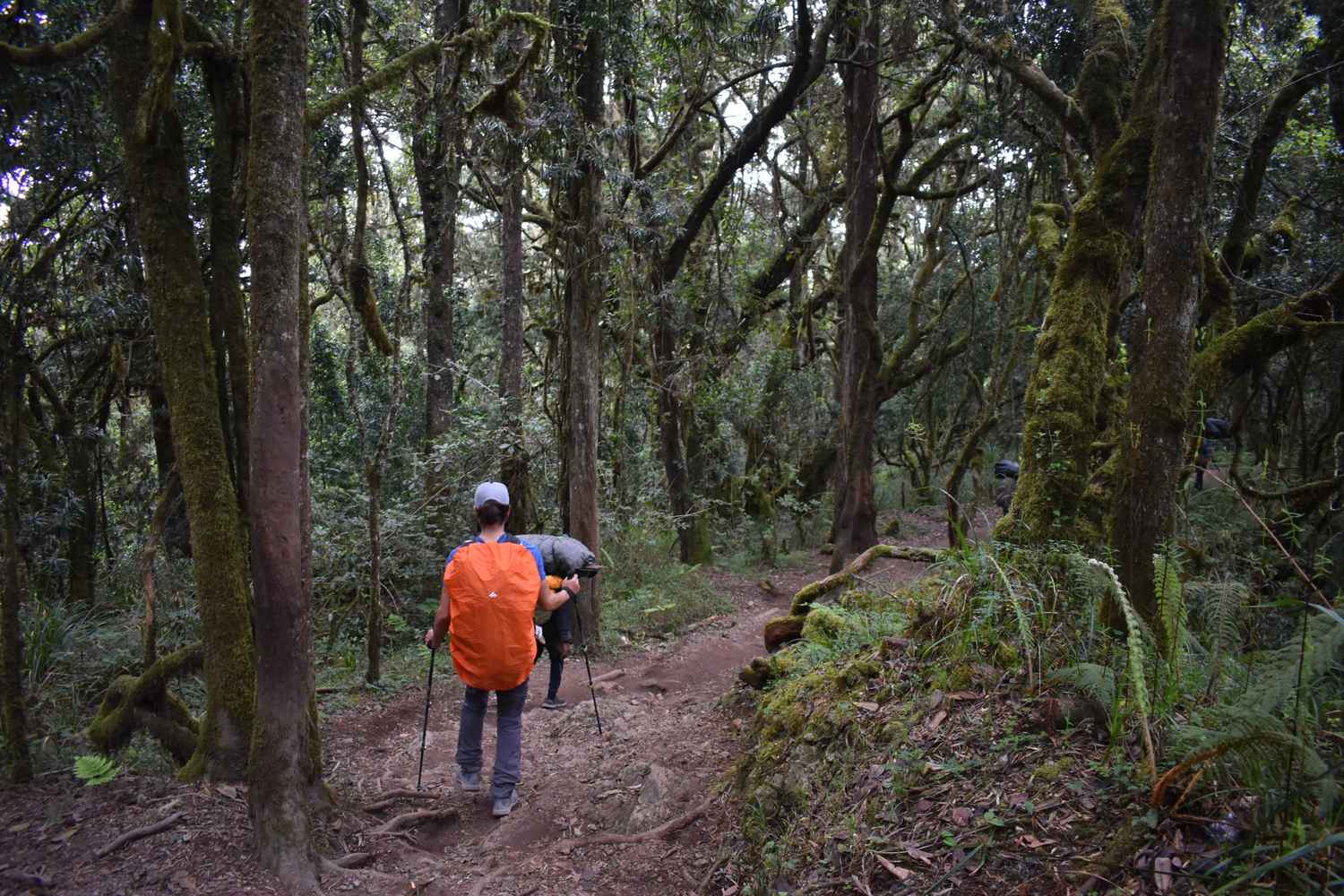
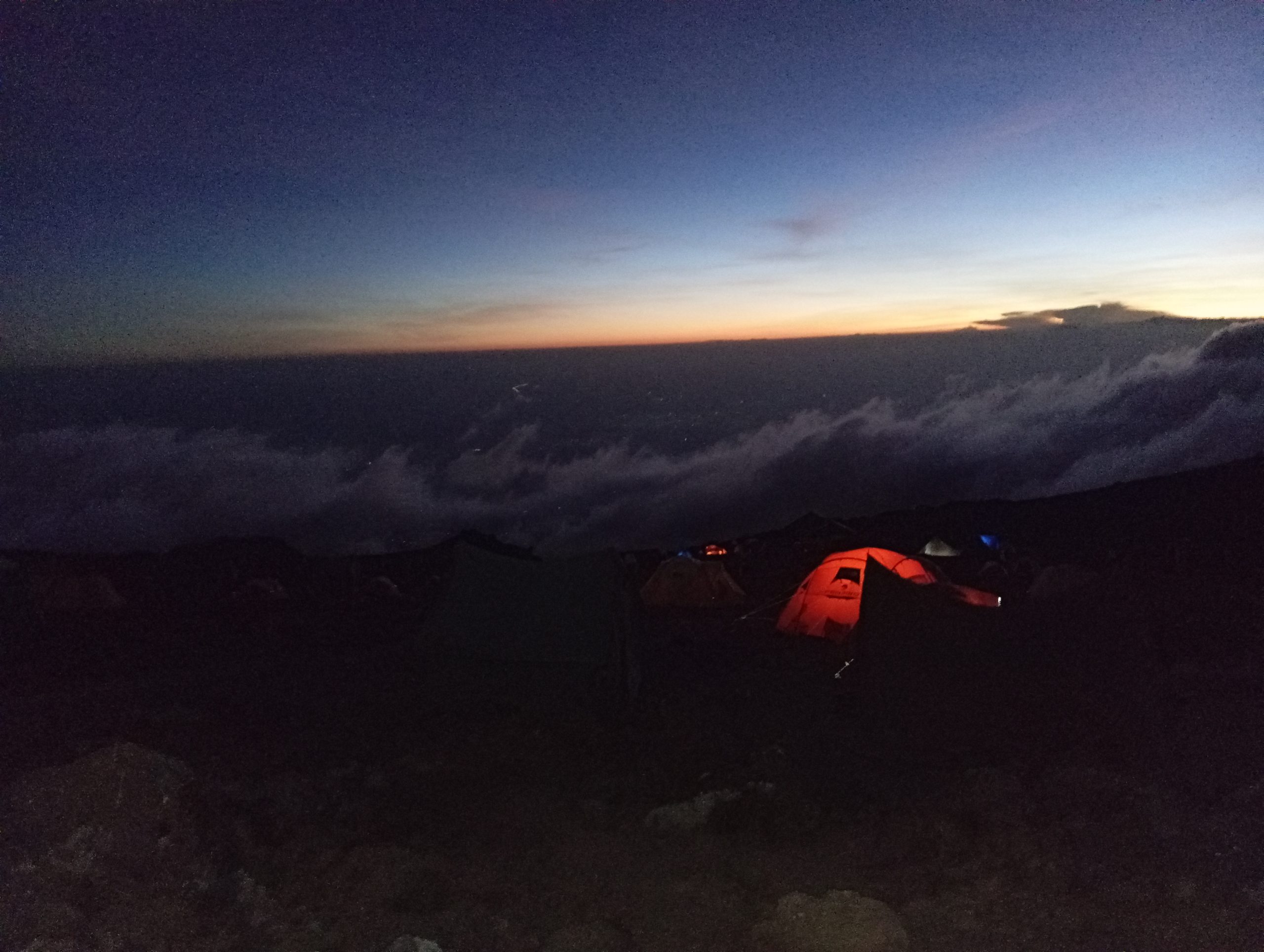
Hi, just wondering I was thinking of climbing Kilimanjaro at the end of March. From reading I understanding this might be the start of the rain season. Really like climbing and scrambling – but is there an advised route to do at this time?
Hi Annie, the Rongai tends to be a little drier at this time of the year.
From my research so far, I think I would use either the Lemosho or Machame route. What are the advantages of each? Thank you for putting together this helpful website.
Hi John, both routes are very similar and are good options. The Lemosho has a little higher start – which can mean you feel altitude sickness symptoms early on. This can pay dividends later in the trek as you might acclimatize faster with a higher start. The first few days on the Lemosho are also a little wilder and less travelled. By day three the routes join up and are identical. Hope this helps!
What is the current speed record for ascent and descent of the mountain going up by the Machame route and down the Mweka? I just saw a claim on Facebook by someone who says they just set that record at under just under four days. Knowing the mountain has been done up and down in less than 7 hours makes me wonder about this claim. Of course the the real speedsters use the shorter routes. Thanks.
Hi Greg, the Kilimanjaro speed record is held by Karl Egloff – https://www.climbkilimanjaroguide.com/kilimanjaro-fastect-ascent/ – a mind-blowing time of 6 hours, 42 minutes and 24 seconds for ascent and decent. He beat the record set by Kilian Jornet. The fastest female time is currently held by German ultra runner Anne-Marie Flammersfeld – 8 hours and 32 minutes to reach the top of Kilimanjaro: https://www.climbkilimanjaroguide.com/female-speed-record-on-kilimanjaro/
Speed records are generally set on the Umbwe via the Western Breach.
I don’t know what the speed record on the Machame is as it would be silly to try set one on this route, but I suspect if someone of the stature of the individuals above tried to set a record on the Machame ascent (probably via the Western Breach) and Mweka descent they would do it in under 24 hours.
Hope this helps!
A couple questions:
1) Is it completely necessary to book a guide before getting to Arusha/Moshi or it possible to book there for cheaper than what you’d get online?
2) How safe is the area/climb for a woman traveling alone (who has lots of developing country travel experience off the beaten path)
Thanks,
Laura
Hi Laura, thanks for getting in touch. Here are the answers to your questions:
1. It is possible to book a climb on arrival in Arusha or Moshi, and often this works out cheaper as you will be dealing directly with a local operator. However, choosing the a quality operator can be confusing and stressful. Most promise the earth but often under-deliver. The benefit of booking in advance is that you have the time to assess a number of operators, check reviews and investigate how they operate. There are many agents online, who appear to be a full service tour operators, but in fact outsource to local operators to run your trek. You will want to avoid these guys. If you decide to book online in advance, make sure to actually call and speak to the operator. At a minimum they should operate their own climbs on Kilimanjaro and have a specialised knowledge in high altitude trekking. Check their reviews and then go from there.
2. Tanzania is relatively safe, as far as East Africa is concerned. Many solo females travel to Kilimanjaro every year. You sound like someone who has travelled extensively so as long as you are vigilant and cautious, you should be fine. On Kilimanjaro you may want to join a group as it can be a little boring trekking alone and I think it is safer to have other travellers around you during the trek.
Hope this helps!